You want to grow a bonsai tree but are not sure where to start. That’s quite normal.
The World of Bonsai is deep, complex, and often overwhelming for beginners. There are so many nice-looking options that it’s difficult to decide which one looks right for you. And even after you’ve made this decision, there’s a whole new vocabulary of gear, soil mixtures, and watering schedules to learn.
But don’t worry, I’m here to help you get started with your first indoor bonsai tree. In this post, I will guide you through 10 of the best indoor bonsai trees that are ideal for beginners.
If you’re a bonsai lover and want to grow them as houseplants, save this list of Best Indoor Bonsai Trees for Beginners for future uses!
Best Indoor Bonsai Trees for Beginners
Bonsai trees come in a wide range of sizes, shapes, and styles, but not all are suitable to grow indoors.
The good news is that there are plenty of indoor bonsai trees available at many local nurseries, as well as online. The problem is it’s easy to become overwhelmed by the sheer number of choices. There are several dozen different kinds of indoor bonsai trees available.
To help you make the right choice, we’ve put together this guide to 10 of the best indoor bonsai trees for beginners. We’ll look at the pros and cons of each species, as well as some general tips on caring for your tree.
1. Jade Plant Bonsai
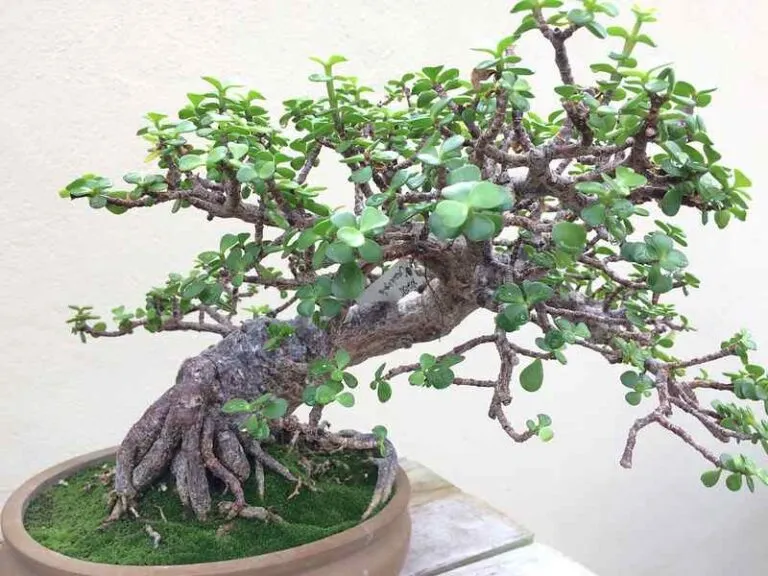
The Jade plant is a succulent from South Africa. It has thick, glossy leaves with a deep green color and is easy to maintain.
Because it’s succulent, you can leave the tree for longer periods of time without water.
The Jade tree loses its leaves in winter and does not grow flowers until spring.
The ideal temperature for growing this indoor bonsai tree is between 65-75 degrees Fahrenheit, with a drop of 10-15 degrees at night.
In winter, the growth of the Jade tree slows down due to the low temperature; therefore you need lesser water and fertilizer to feed the plant.
2. Chinese Elm Bonsai
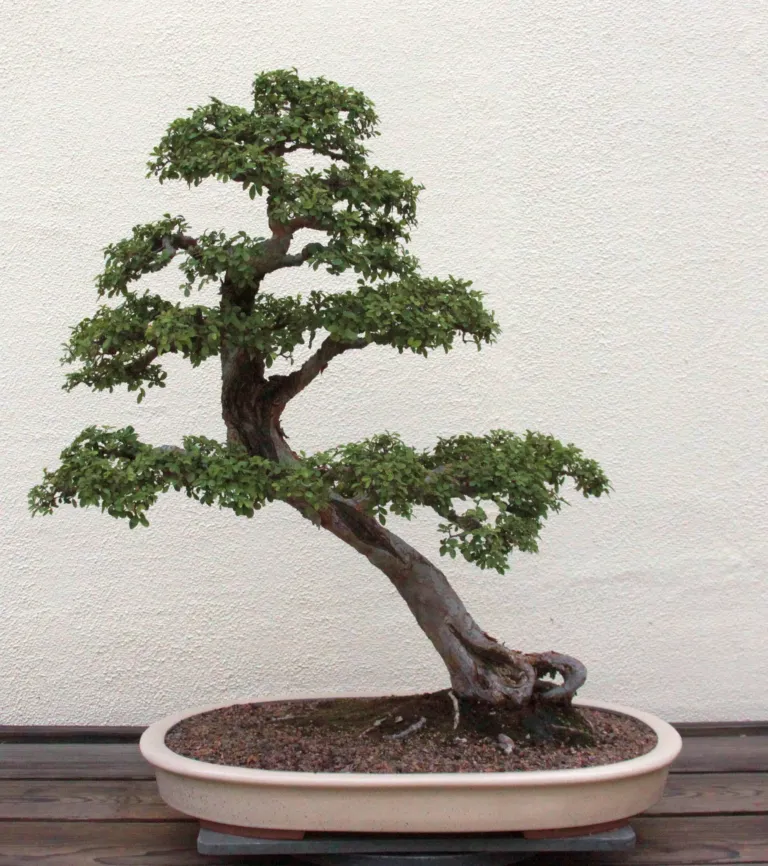
The Chinese elm is the most popular variety of elm bonsai trees. The bark is a lovely gray-brown color with small leaves that transition from light green to dark green throughout the year.
The leaves of a Chinese elm are small and dark green with a rough texture. What makes it ideal for beginners is it is hardy and easy to care for. Here is the detailed post on how to grow a Chinese elm bonsai in your house, do check this out.
3. Juniper Bonsai
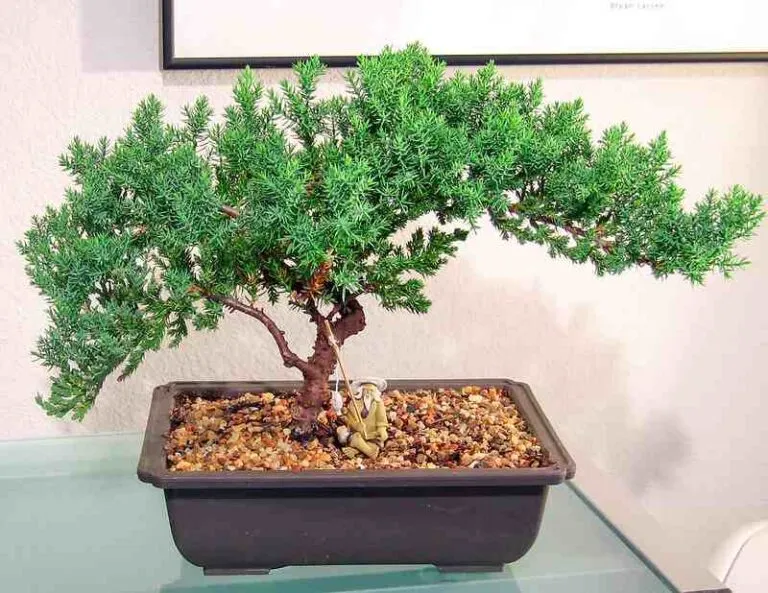
The Juniper bonsai tree is one of the most common and popular types of bonsai trees due to its tolerance to different conditions as well as its ability to adapt easily to new environments.
Juniper is an evergreen plant and so it looks great year-round and changes its appearance throughout the seasons.
Juniper bonsai also grows quickly compared to other bonsai. It also has beautiful green, blue needle-like leaves that look amazing in a home or an office.
4. Ponytail Palm Bonsai
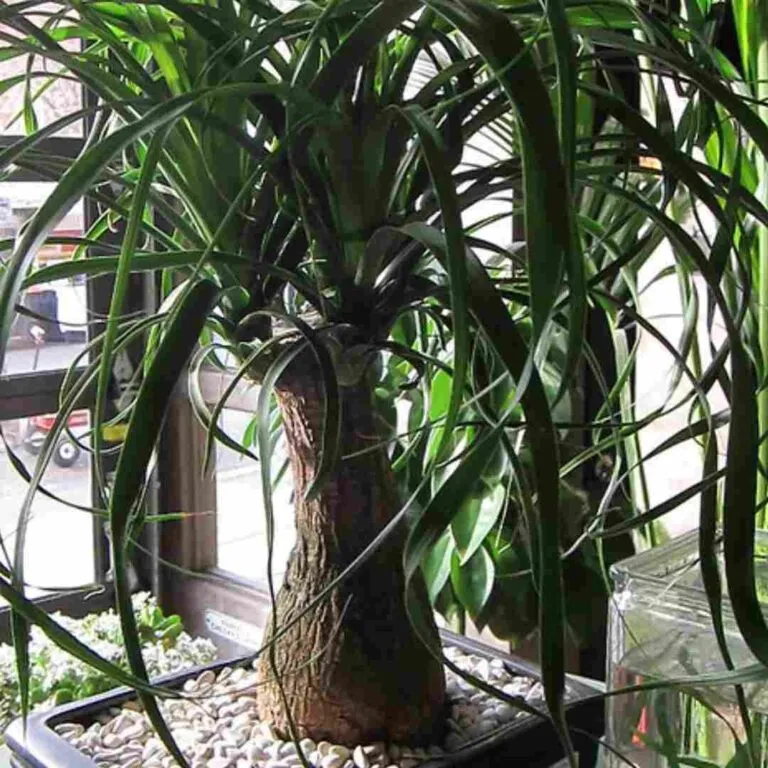
Ponytail palm bonsai (Beaucarnea recurvata) make great indoor bonsai trees, as they are very adaptable and easy to grow. They do not require direct sunlight and can do well in artificial lighting conditions, which is why they make ideal houseplants.
These trees can grow to be up to 12 feet tall when grown outdoors, but grown as a bonsai tree, they reach only about two feet high.
5. Ficus Bonsai
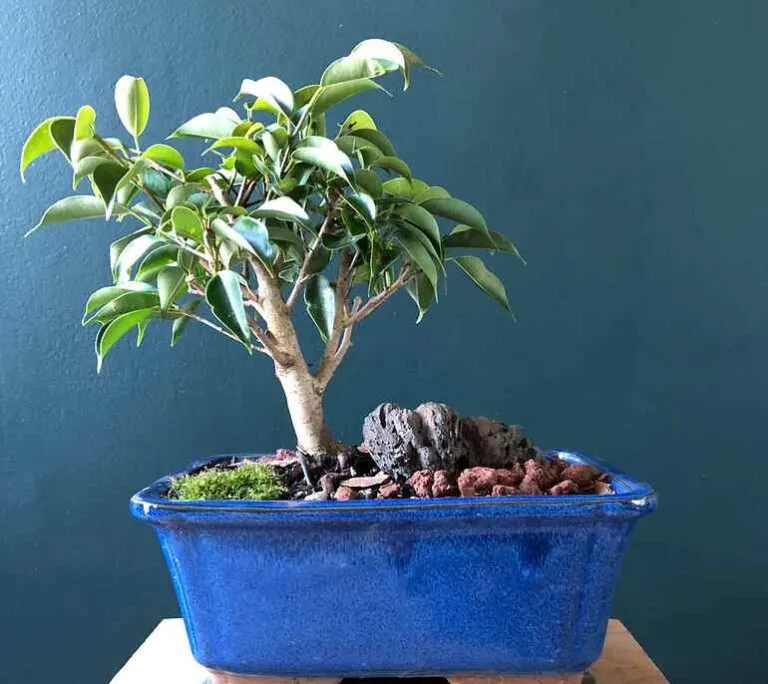
The ficus is one of the most well-known plants among beginner bonsai enthusiasts.
Ficus bonsai is easy to care for and it grows pretty quickly. You can grow them both indoors and outdoors.
Ficus trees tend to branch out more than other varieties, making them ideal for creating elegant styles like a formal upright and informal upright.
6. Fukien Tea Bonsai:
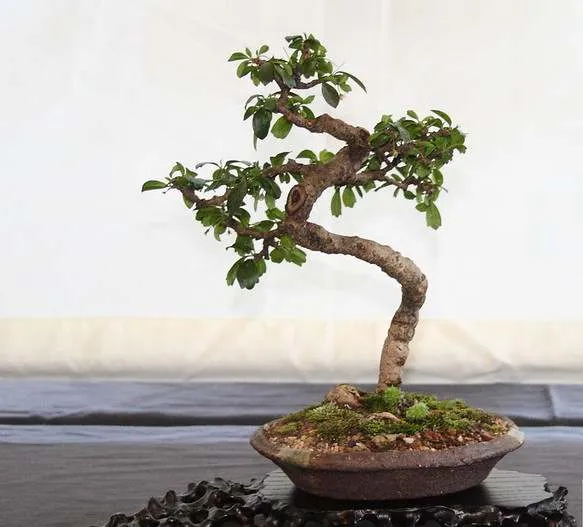
The Fukien Tea bonsai is one of the best bonsai trees for beginners because of its low maintenance requirements.
It is an evergreen, tropical shrub with small, dark green leaves and white flowers that bloom into tiny berries.
The tree needs full to partial sun to flourish. Keep the tree near a south-facing window or add some artificial grow lights so it can get enough light.
7. Schefflera Bonsai:
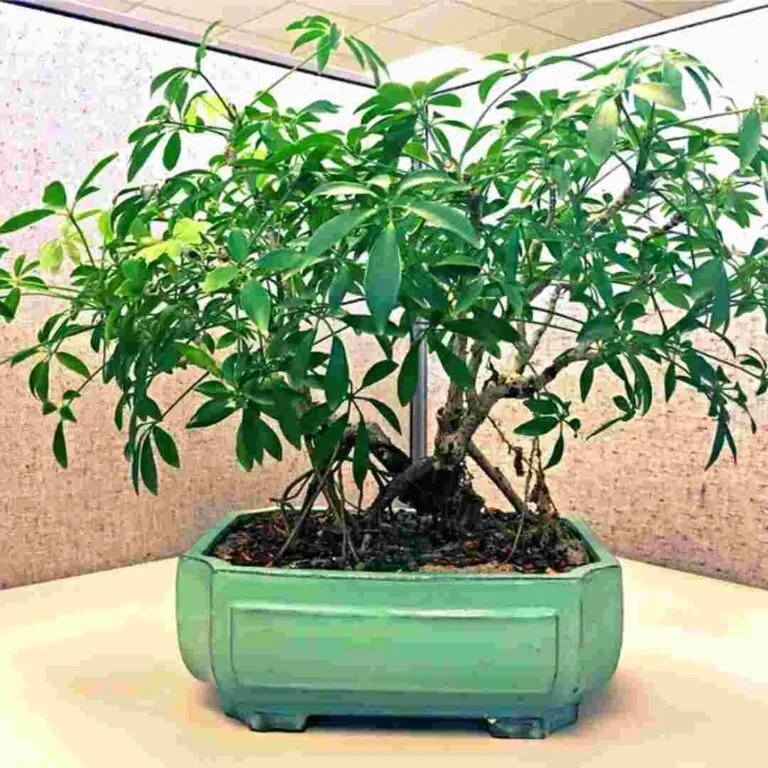
The Schefflera arboricola — also known as the dwarf umbrella tree — makes another good starter bonsai plant. Its leaves are glossy and unique, and its growth pattern lends itself to easy styling.
The Schefflera bonsai does well in direct sunlight and lower light conditions, making it an ideal choice for beginners with less-than-perfect lighting conditions.
As long as you don’t overwater it, your dwarf umbrella tree will thrive in any indoor environment.
8. Norfolk Island Pine
The Norfolk Island pine (Araucaria heterophylla) is not a true pine; it’s actually an evergreen coniferous tree and can live for more than a century. It has a pyramidal shape and soft feathery branches with stiff dark green needles that resemble flat scales.
The mature height of this tree ranges from 66 to 131 feet tall, but when grown as a houseplant it will only grow up to six feet tall.
9. Money Tree Bonsai
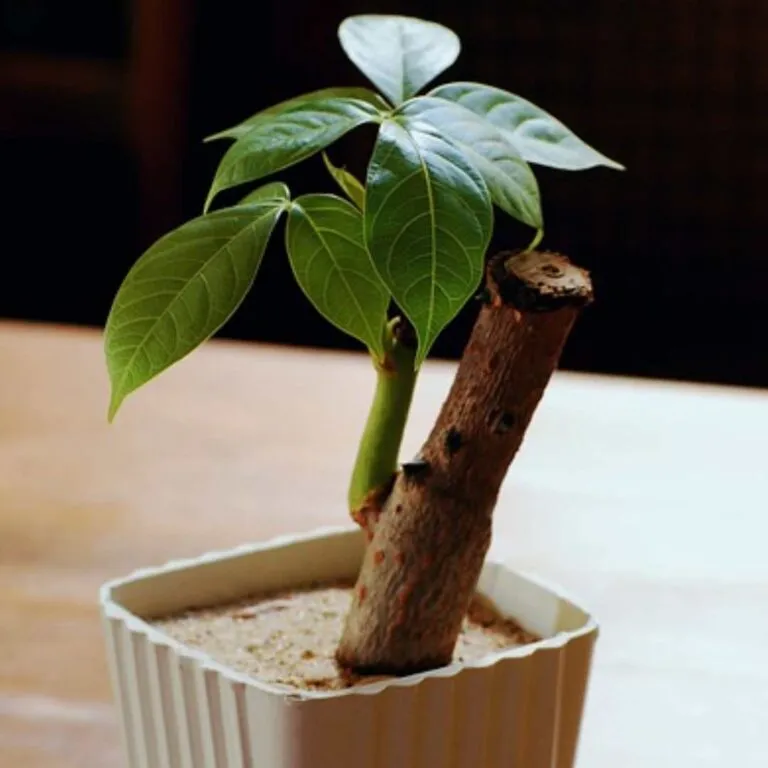
Money tree bonsais are known for their five-lobed leaves and braided trunks. These small trees are extremely easy to care for and can tolerate lower light levels than most other types of bonsai trees.
This unique style has made money trees popular as both indoor plants and decorative features in offices, homes, and other commercial spaces.
10. Desert Rose

The desert rose is another popular type of indoor bonsai tree because it’s so easy to take care of.
It is also known as Adenium Obesum and has adapted to thrive in extreme heat and arid conditions with little water.
If you live in a dry climate, the desert rose may be the ideal bonsai tree for you.
This small shrub has woody stems that can grow up to four feet tall over time, but they can be pruned to keep them small enough for your home or office space. Desert roses bloom with beautiful pink flowers.
The Care And Keeping Of Indoor Bonsai Trees
Although indoor bonsai trees prefer natural lighting, they will usually thrive in any well-lit area of your home or office.
Arranges Light For The Bonsai:
Indoor bonsai trees need light and a lot of it. Place your bonsai in the brightest spot in your house or apartment so that it receives as much sunlight as possible.
Move your bonsai near a south-facing window and use sheer curtains to diffuse intense sunlight on hot days.
If you can’t provide enough natural light, you’ll need to supplement with artificial lighting. A grow light like this is excellent for this purpose because it provides the full spectrum of light your little tree will need to grow and stay healthy.
Increase The Humidity Level:
It’s no secret that most homes are extremely dry during the winter months when your bonsai will require the most water and humidity to survive.
Fortunately, there are many ways you can increase the humidity level for your plant. Put a humidity tray filled with water and pebbles underneath your pot.
You can also mist your bonsai daily to increase humidity levels around your plant — just be sure to never allow water to stand in the tray beneath the pot since this can cause root rot or fungus growth.
And if you are serious about your bonsai, investing a few dollars in a quality humidifier will be the best way to increase the humidity level.
Don’t Forget To Water Your Bonsai:
An indoor bonsai tree requires a lot of water. This means that you will need to water the tree every day or at least every other day depending on the time of year and your climate zone.
You should never let the soil dry out completely. Instead, check it daily and water as soon as the soil feels dry to the touch. Keep in mind that desert varieties like jade plants need less frequent watering than tropical varieties.
If your plant leaves begin to curl or drop off, it’s possible you’re giving it too much water or not enough light. Additionally, if leaves turn yellow, this can be a sign of too much watering or over-fertilizing.
Maintain A Constant Temperature:
Most indoor bonsai do best at room temperature, though they’ll survive almost anywhere as long as it doesn’t get too cold.
Ficus bonsais do best between 65 and 75 degrees Fahrenheit, while most others do fine between 50 and 65 degrees F.
Avoid putting them near heaters or vents or anywhere that gets drafty.
Conclusion:
The 10 indoor bonsai trees that I suggested above are excellent choices for beginners who may lack experience growing houseplants.
Bonsai trees are miniature replicas of full-sized trees. Their size makes them ideal for small spaces and homes, but it also makes them more susceptible to changes.
Bonsai trees require more attention and effort than regular houseplants, but the extra work will pay off as you enjoy your miniaturized piece of nature.
I hope this post was helpful to you. If you like the post share it with others also.
